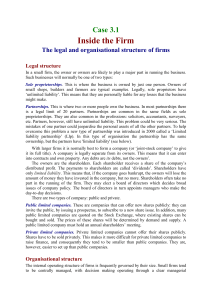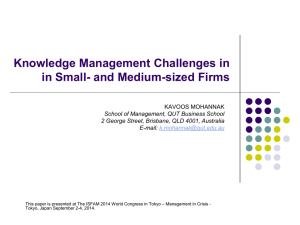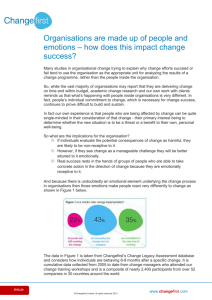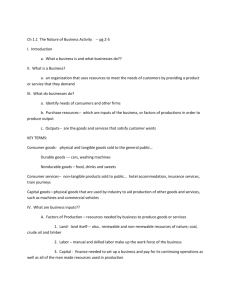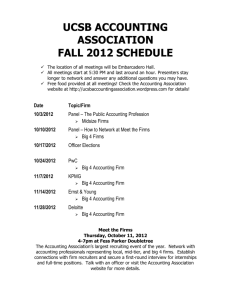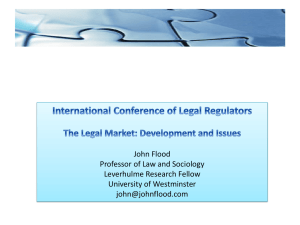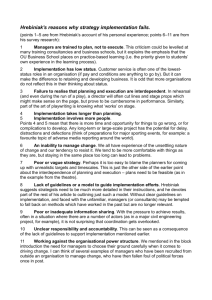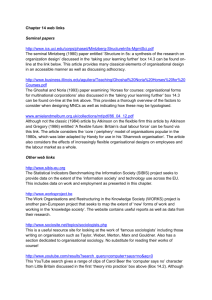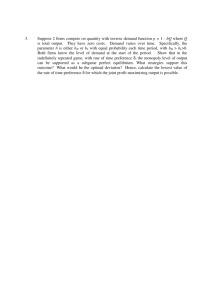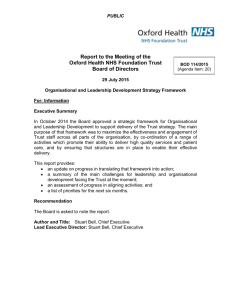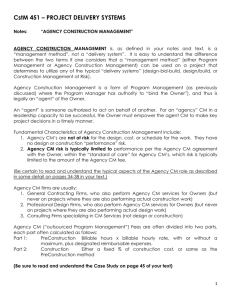The organisational structure of firms
advertisement
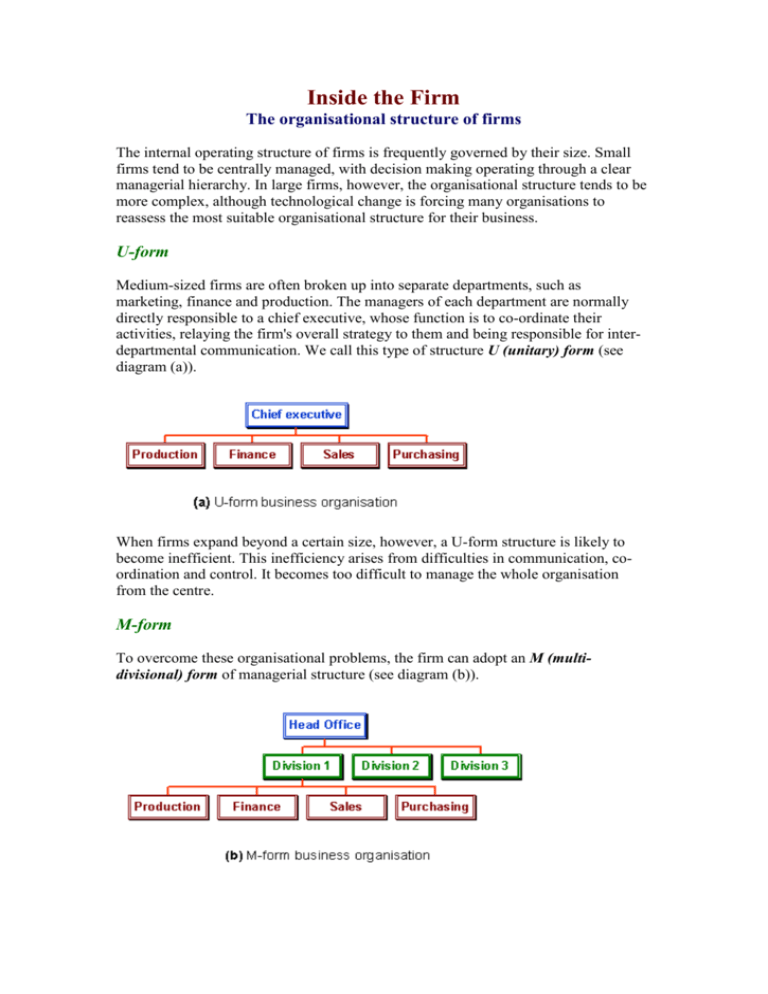
Inside the Firm The organisational structure of firms The internal operating structure of firms is frequently governed by their size. Small firms tend to be centrally managed, with decision making operating through a clear managerial hierarchy. In large firms, however, the organisational structure tends to be more complex, although technological change is forcing many organisations to reassess the most suitable organisational structure for their business. U-form Medium-sized firms are often broken up into separate departments, such as marketing, finance and production. The managers of each department are normally directly responsible to a chief executive, whose function is to co-ordinate their activities, relaying the firm's overall strategy to them and being responsible for interdepartmental communication. We call this type of structure U (unitary) form (see diagram (a)). When firms expand beyond a certain size, however, a U-form structure is likely to become inefficient. This inefficiency arises from difficulties in communication, coordination and control. It becomes too difficult to manage the whole organisation from the centre. M-form To overcome these organisational problems, the firm can adopt an M (multidivisional) form of managerial structure (see diagram (b)). This suits larger firms. The firm is divided into a number of ‘divisions'. Each division could be responsible for a particular product or group of products, or a particular market (e.g. a specific country). The day-to-day running and even certain long-term decisions of each division would be the responsibility of the divisional manager(s). There are a number of benefits: Reduced length of information flows. The chief executive being able to concentrate on overall strategic planning. An enhanced level of control by managers, with each division being run as a mini ‘firm', each competing with other divisions for the limited amount of company resources available. One of the major problems with M-form organisations is that they can become very bureaucratic with many layers of management. Managers might pursue goals that conflict with those of shareholders or head office. As a result, some companies in recent years have moved back towards simpler structures. These flat organisations, as they are called, dispense with various layers of middle management. Recent technological innovations, especially in respect to computer systems such as e-mail and management information systems, have enabled senior managers to communicate easily and directly with those lower in the organisational structure. In many respects, the flat organization represents a return to the U-form structure. It is yet to be seen whether we also have a return to the problems associated with this type of organization. H-form As many businesses have expanded their operations, often on a global scale, so further more complex forms of business organisation have evolved. One such organisation is the H-form or holding company. A holding company (or parent company) is one that owns a controlling interest in other subsidiary companies. These subsidiaries, in turn, may also have controlling interests in other companies. There may thus be a complex web of interlocking holdings. While the parent company has ultimate control over its various subsidiaries, it is likely that both tactical and strategic decision making is left to the individual companies within the organisation. Many multinationals are organised along the lines of an international holding company, where overseas subsidiaries pursue their own independent strategy. As the organisational structures of companies and their forms of governance become more complex, so it becomes increasingly difficult to identify simple company aims. Different managers or departments may have different objectives. What predictions, then, can we make about firms' behaviour? We will examine this question throughout this chapter. Question What advantages might the consumer gain from a large M- or H-form company?
